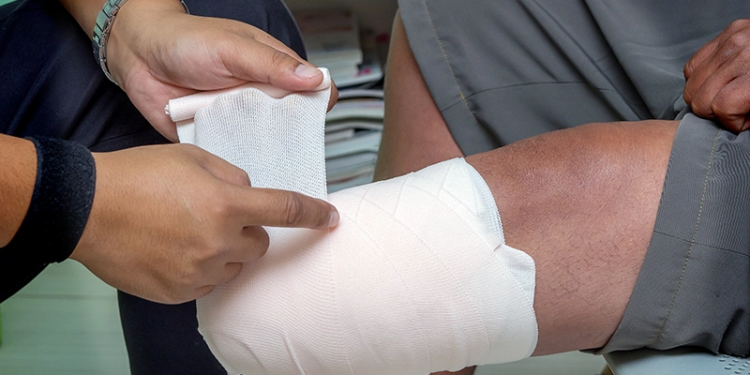Thanks for all of your responses!
________________________________________________________________________________
The Question:
What types of transfemoral socket designs have you seen/used that work best
with bike seats? What design considerations/modifications have you used to
prevent socket brim/bike seat interference and bumping?
Chelsea
——————————————————————————————————————————————–
The Answers:
Hi, One of my transfemoral patients has cycled a 100km road race and a 70km
mountain bike race on a MAS socket.He does not have a specialised prosthesis
for cycling. He cycles on his everyday walking prosthesis so there are no
special modifications to the socket. I put just about everybody on a MAS
socket with a high success rate.
Chris CP South Africa
Hi Chelsea.
I have one experience. My patient was a very serious competitive rider. I
tried many things and the one thing he really liked was no brim at all. I
copied his ischial containment socket and cut the brim obliquely, start as
high as you can and lower until the patient can pedal comfortably. To do
this process effectively we removed the front wheel and mounted the rest of
his bike on an indoor trainer, this allowed him to get up to speed without
going outside. His prefered method of suspension was a locking pin system,
this was reused, I reduced the A/P dimension 4cm above the distal end to
reduce the “bell clapping effect” that he felt when at high speed. He could
not walk on this system, I also removed the hydraulic unit from his knee
frame to allow a completely unrestricted knee action. He rode extremely fast
with this design.
Good luck
Harry Browne
Director of Prosthetic Development
Trulife
>Without hesitation, the M.A.S. socket in the hands of a practitioner who
knows how to accurately fit one. Good luck.
Agnes Curran, CP
Chelesa, You might try casting your client on the same seat used for bking.
M. Wilson
Symmetry Socket System – Sub-Ischial Containment – Share your other
responses please.
Chelsea,
Simply cut the brim lower all the way around or at minimum the medial. This
opens up the option of using a sleeve as an auxiliary suspension mechanism.
If the limb is very short, a double wall design works well.
Let me know if you have further questions. I have a lot of experience with
amputee cycling.
Zach Harvey, CPO
Walter Reed Army Medical Center
Hi Chelsea,
I do quite a bit of work (I’m a consultant to Trek Bicycles) with all types
of cyclists, including amputees. By and large, my AK population have
required no modifications to their sockets. They have the same clearance
issues on the bike saddle that they have in day to day ambulation. The one
hang-up that I can think of that I’ve seen over the years is that a socket
will get caught on the edge of the saddle as they are trying to dismount.
Usually, that only happens once, and they figure out how to move in such a
way that they do not catch on the seat.
The biggest obstacle for AK’s who ride is the idea that when they come up to
a stop sign, for example, they have to control their bike in such a fashion
as to move their weight towards the sound side, so that they do not tip over
on the prosthetic side. Again, they usually only do that once before they
figure out how much it hurts to fall over onto the ground.
My usual socket shape, just so you know, is sort of a modified “Sabolich”
design, with high posterior trimlines encompassing the buttocks. The medial
trimline is at the usual height.
Most folks can only afford one prosthesis, so the idea of lowering the
trimlines in some way that might compromise walking stability is out of the
question.
Good Luck,
Warren R Mays, CPO
Hi Chelsea,
When I first started riding bikes I did use my everyday prosthetic to ride
the bike. After a couple years of doing triathlon I did get a different leg
for the bike. I have been wearing a different running leg for years, but
when I also first started running I did wear my everyday leg for running as
well. In fact I did my first 2 marathons on my everyday walking leg! But
now I run with the Flex-Run and have since 1999.
I use a silicone liner with a strap (I don’t have room for the pin with my
long stump). I use the Dermo Liner – a 3mm for everyday, and a 6mm for when
I run. On the bike I can use either liner too. The trim lines on my bike
socket are definitely a lot lower than my everyday leg, but you don’t need
the same support on the bike that you do when you walk.
Some people find a skinny bike seat, or even trim the bike seat (on the side
with the prosthesis) so prevent the socket from getting caught.
I use bike shoes and cleats, they help keep my prosthesis on the pedal, and
also help a lot on the sound side too to help me pull up on the pedal
stroke.
Hope this is helpful. Best of luck to you and your patient.
Happy riding and lots of tailwinds!
Best,
Sarah




